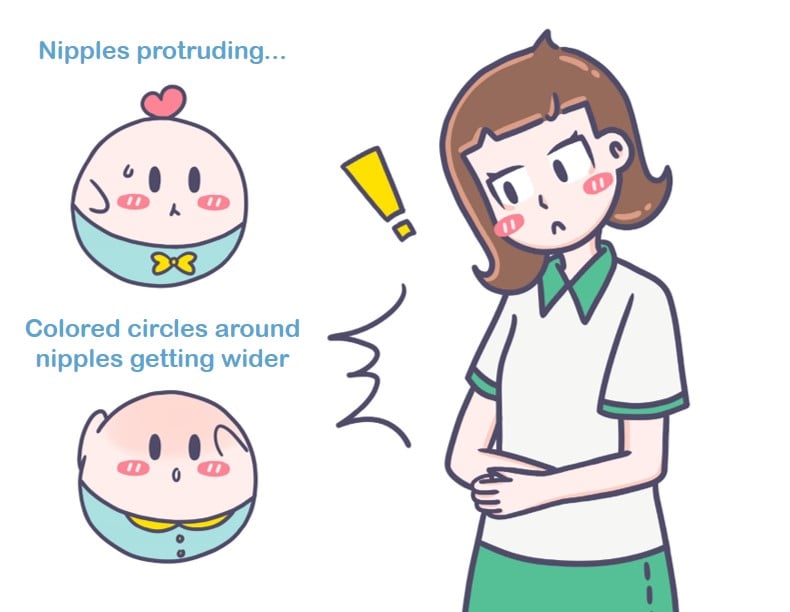If your daughter is entering puberty, you’re probably both wondering what to expect, especially when it comes to breast development. Understanding these changes can make this journey less overwhelming and more empowering for both of you. Whether you’re a mom looking for guidance or your daughter is curious about her body, this article will walk you through the puberty breast growth stages, common concerns, and how to support her through this transformative time. From hormonal changes to finding the right bra, we’ve got you covered.
Understanding Breast Development During Puberty
Breast development also known as thelarche, is often one of the earliest visible signs of puberty. It’s all driven by hormonal changes, prepping her body for adulthood. By understanding each of the puberty breast growth stages, you can confidently and empathetically support your daughter during these changes.

The Five Tanner Stages of Breast Growth: What to Expect
Doctors use the Tanner scale to chart the stages of breast development. Here’s a breakdown of what you might see:
-
Stage 1 (Prepuberty):
-
No noticeable breast tissue growth.
-
The areola (area around the nipple) remains flat against the chest.
-
Hormone levels are beginning to shift internally, with no external first signs of puberty.
-
-
Stage 2 (Breast Budding):
-
Typically begins between ages of 8 and 13.
-
Small, firm breast buds start to form under the nipples, thanks to estrogen production.
-
The areola might get a bit bigger, and tenderness is common.
-
-
Stage 3 (Further Enlargement):
-
Breasts start to grow beyond the initial bud stage, becoming rounder and fuller.
-
The areola keeps expanding, and you may notice some asymmetry in breast size, which is totally normal.
-
-
Stage 4 (Projection of Areola and Nipple):
-
The areola and nipple form a secondary mound above the breast tissue.
-
This stage happens closer to mid-to-late puberty, and the timing can vary a lot.
-
-
Stage 5 (Mature Adult Breast):
-
Breasts reach their final size and shape, although they might continue to slightly change shape over time.
-
The secondary mound disappears as the areola becomes flush with the breast contour.
-
Here’s a breakdown of the five stages of breast development:
| Tanner Stage | Age Range | Development Signs |
|---|---|---|
| Stage 1 (Prepuberty) | No specific age | No visible breast tissue, flat areola |
| Stage 2 (Budding) | 8-13 years | Small breast buds form, nipples may be tender |
| Stage 3 (Enlargement) | 10-15 years | Breasts grow rounder, areola enlarges |
| Stage 4 (Projection) | 12-17 years | Areola and nipple form a mound above breast |
| Stage 5 (Mature Breast) | 15-18 years | Breasts reach final size and shape |
Common Concerns During the Puberty Breast Growth Stages
It’s normal for girls to have questions and concerns during puberty breast growth stages. Here are a few common ones:
-
Asymmetry: It’s common for one breast to grow faster than the other at first. Usually, they even out over time.
-
Tenderness: Hormonal fluctuations can cause sensitivity or soreness.
-
Breast Lumps: Small lumps during early development are typical, but it’s always a good idea to consult a pediatrician with questions.
How You Can Support Your Daughter Through Puberty

Supporting your daughter through the puberty breast growth stages involves open communication, practical help, and lots of reassurance. Remember, this is a natural part of growing, and your support can make all the difference.
-
Open Communication:
-
Create a safe space where she feels comfortable asking anything about body changes. Start by sharing your own experiences with puberty. This can make her feel less alone.
-
Use simple language to explain hormonal changes and what they mean for her breast development.
-
-
Proper Bras:
-
Introduce training bras like those from Suyiyi for extra comfort during early stages of development. Make the process fun by letting her choose styles and colors she likes.
-
Ensure the bra fits well, providing support without being too tight. A well-fitted bra can also boost confidence.
-
-
Body Positivity:
-
Reassure her that all shapes and sizes are normal and beautiful. Steer clear of negative comments about your own body or others’.
-
Help her focus on her strengths and talents. Remind her that breast size doesn’t define her worth.
-
-
Practical Tips:
-
Address Tenderness: If she experiences tenderness or soreness, suggest wearing a soft bra, especially during physical activity. A warm bath can also provide relief.
-
Manage Asymmetry: Reassure her that uneven breast size is normal and often evens out over time. If it concerns her, talk about the options with a doctor or trusted adult.
-
Focus on Health: Encourage a healthy diet and regular exercise, which can help manage weight gain and other changes.
-
FAQs About Puberty Breast Growth Stages
At what stage of puberty do breasts grow?
Breast growth usually starts in Stage 2, the “budding” stage, when small breast buds start forming under the nipples, typically between ages of 8 and 13 due to hormonal changes, especially estrogen. As she progresses through puberty, the breasts start to grow and become rounder. Suyiyi training bras offer comfort during these stages of development.
Why is my daughter’s breast not growing?
The timing of puberty varies; breasts usually start to develop between ages of 8 and 13. If there is no sign of puberty or breast development by age 13, it’s wise to consult a pediatrician to assess her health and hormone levels. Encourage open conversation and positive body image during this time.
Is it normal for breasts to be different sizes during puberty?
Yes, it’s very common for breasts to grow at different rates.
